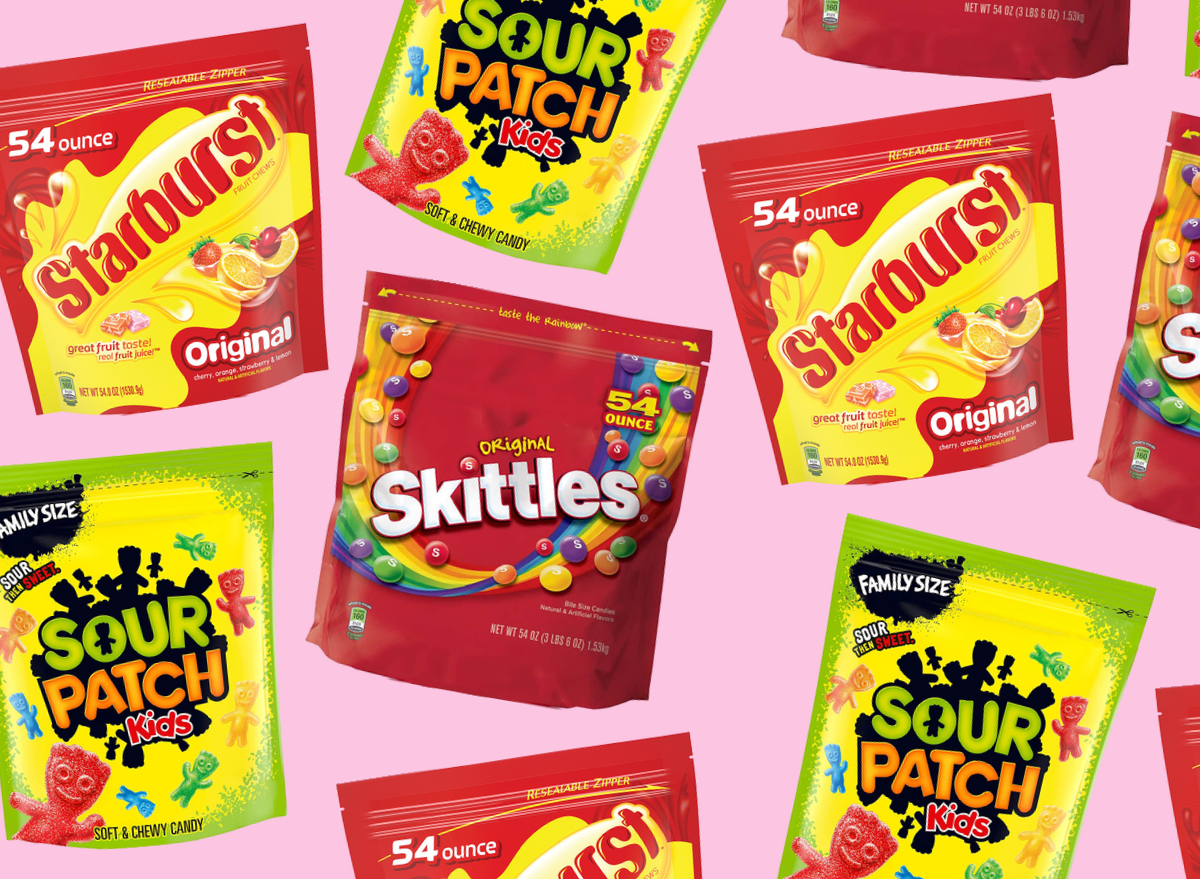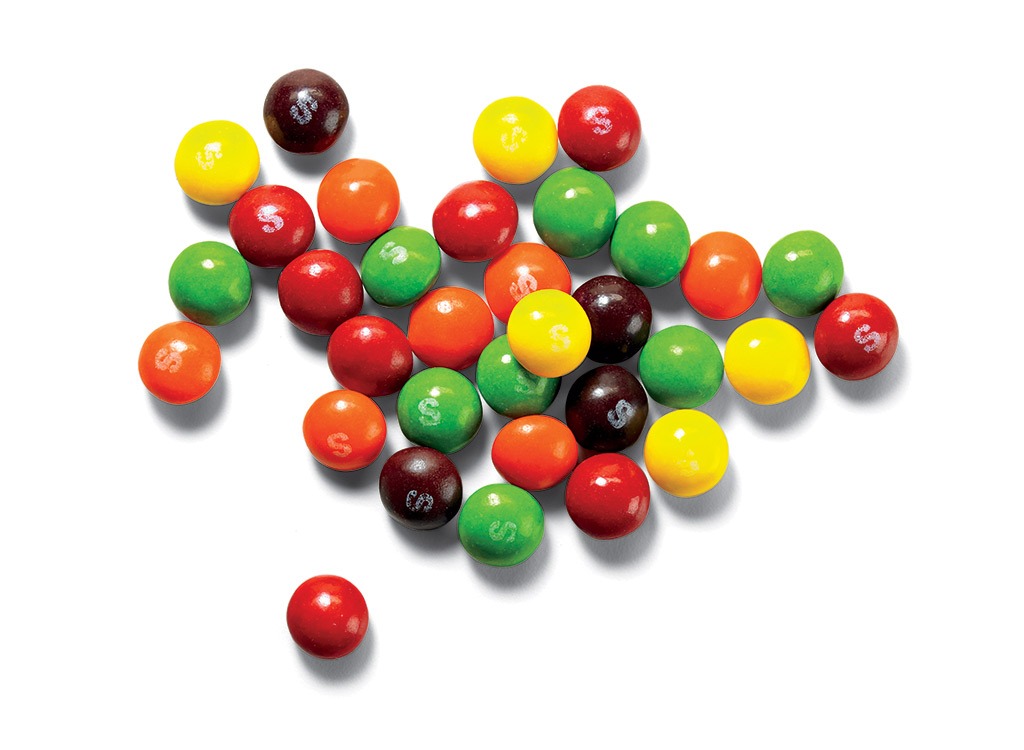Starbursts, Jell-O, and 3,000+ Other Foods Contain This Dangerous Chemical, Study Finds

As much as it's empowering to belt "I am titanium" when Sia's hit song comes on, it doesn't necessarily mean that you want to be ingesting titanium, right?
Unfortunately, you may be getting a hint of titanium in many of the foods you eat, well, more specifically titanium dioxide. A scientific panel created by the European Food Safety Authority (EFSA) found that this particular additive—which is used in more than 3,000 of your favorite ultra-processed foods—can no longer be considered safe for human consumption.
The study from the EFSA concluded that the additive may damage DNA and cause cell mutations, which was based on the results of hundreds of scientific studies. As a result, the EWG has called on the U.S. Food and Drug Administration to reevaluate its use and consider banning the additive from snack items to which children are especially drawn. Popular foods that contain the chemical include Skittles, Starbursts, Jell-O, Sour Patch Kids, and Little Debbie baked goods.
"Titanium dioxide is a synthetic food colorant that is also used to make paints and consumer products bright white," Aurora Meadows, MS, RD, and nutritionist for the Environmental Working Group tells Eat This, Not That!
"While we can't know for sure why a manufacturer chooses to use any additive in an ultra-processed food, it's safe to assume that it's being used to opacify the sugar-coated candy."

For example, Meadows explains that the chemical is used in Skittles in the same way a primer is used on a wall before you paint it. You prime the wall for uniformity before adding color, and the same concept can be applied to how food manufacturers make the color of a Skittle "pop."
In fact, you've probably seen a Skittle's primer firsthand. For example, when Skittles jostle against each other in the bag, pieces of that color-coated outer layer break off or become chipped, exposing a white or opaque layer beneath.
Candy and snack foods aren't the only items that contain the damaging chemical. As Meadows points out, the "Handbook of Food Science, Technology, and Engineering" edited by Y.H. Hui by Taylor & Francis Group, LLC states, "Titanium oxide…is often used to opacify systems such as low-fat/no-fat salad dressings and dairy products, pet foods, baked goods, sugar-coated candies, and other confections."
While the EFSA highlights scientific studies that showed exposure to titanium dioxide in food could result in DNA damage, Meadows points out there are two data limitations in their study. The first includes the absence of studies that evaluate the impact of increased exposure to the additive over time due to its buildup in the body. Second, the study lacks research on the additive's potential to cause cancer.
What's even more telling? Some pet stores won't even supply pet food that contains the chemical.
"As of May 2019, [most] pet food at Petco cannot contain titanium dioxide. So, our pets are being more protected than our kids," says Meadows.
You're probably wondering why this has yet to be addressed by the FDA. Unlike the USDA, which reviews synthetic ingredients used in certified USDA Organic products every five years, the FDA isn't as willing to review the safety of food additives—even when new science emerges that exposes potential health risks.
If anything, this study gives everyone a little more incentive to ditch ultra-processed foods and instead, opt for eat more real, whole foods such as fruits, vegetables, nuts, and seeds to keep your body safe.
For more, be sure to check out FDA Under Fire For Not Regulating Thousands of Chemicals in Your Food.








